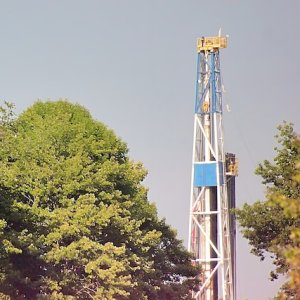
Hydraulic Modeling Determines Flood Footprint
SOWITEC group focuses on the development of wind and photovoltaic projects. It works with new technologies, allowing for the lowest environmental impact as well as an efficient performance in the generation of clean energy, such as from renewable sources. To make this approach a reality, projects are evaluated by the engineering department to determine their technical viability. A crucial factor for wind projects is the flood footprint, which is determined by using two-dimensional (2D) numerical models.
In a wind project, a flood footprint is the marking out of an area where a flood risk is present. A key objective is to estimate this risk, giving developers important information on how to arrange infrastructure within a wind park to avoid it being endangered. The outline includes perennial rivers and streams, bodies of water and areas where intermittent streams pass through.
To determine the flood footprint, you need to know the variables generated by the water runoff. These variables include the surface tension and speed that the runoff reaches at different time intervals. Here, hydrologic and hydraulic analysis is necessary, which is supported by 2D hydraulic modeling. There are a variety of programs available to generate these models, depending on the scope of the analysis that is needed. For the rainfall-runoff analysis of rural basins, SOWITEC group bases its approach on the Hydrologic Modeling System (HEC-HMS) program (as seen in figure1). This was developed by the US Army Corps of Engineers, using empirical methods. For 2D hydraulic modeling, open access programs, such as IBER and HEC-RAS, are used. Processing vector data and raster files in a Geographic Information System (GIS) and importing them into the 2D modeling program (figure 2) obtains the hydraulic variables that allow for the determination of the flood footprint in wind projects (figure 3).
Each project has a different degree of complexity in the Hydrologic-Hydraulic 2D analysis. The accuracy of the analysis depends on various factors, such has having a Digital Terrain Model (DTM) available. This DTM accurately represents the surface on the site where existing hydraulic infrastructure is placed and displays a correct representation of the site’s surge, the placement of existing hydraulic infrastructure and the correct calculation of floodplain regulation, which all enter the polygon and calibration of the site, from data measured in the field.
SOWITEC group performs these works in a detailed manner, obtaining the flood footprint with maximum accuracy. This is essential when developers are looking to ensure the viability and proper functioning of the wind project’s infrastructure.
Author:
Jomaelah Morales Ray
Morales Ray is a Civil Engineer from the Technological Institute of Zacatepec. He has a master’s in hydraulic engineering from the Universidad Nacional Autónoma de México and is in charge of the technical area of hydrology, hydraulics and geology at the Engineering Department of SOWITEC Group in Mexico City.



















